
We invite you to travel with the Library! To open a book is a journey like no other, allowing anyone anywhere to live among the stars, through time, or just across the ocean. There’s no need for airfare or even the laws of physics in these pages, so strap in for the ride.
In April of 1961, Yuri Gagarin became the first human being in space, turning the dream of intergalactic travel from just that, a dream, to a real possibility for the future. Humans have made great strides since then – leaps even – and there’s only more to come. If you want to study up before the next mission to Mars, here’s some nonfiction centered around the wonders of space and the tiny corner of it we’ve gotten our hands on.
- Nonfiction Picks
- Image
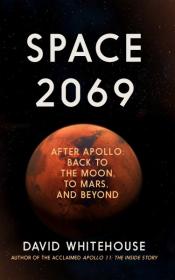
Space 2069: After Apollo: Back to the Moon, to Mars... and Beyond by David Whitehouse
Half a century after Apollo 11 we have still not returned to the Moon, but that is about to change. The thirteenth person to walk on the Moon could soon be part of a crew establishing a base on the lip of a crater at the lunar south pole. The discovery of ice in the eternal shadows of the polar regions transforms our ability to live on the Moon. From bases on the Moon we can make the long, lonely and dangerous voyage to Mars, where there is also ice. The obstacles are many, not least the fragilities of the human body. And what type of world would the first Mars explorers find? Science journalist David Whitehouse – with his ‘reporter’s gift for uncomplicated storytelling’ ( Financial Times ) – presents a mind-expanding tour of humanity’s future in space over the next 50 years, up to the 100th anniversary of the moon landing.
Image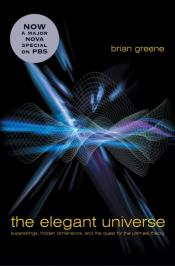
The Elegant Universe: Superstrings, Hidden Dimensions, and the Quest for the Ultimate Theory by Brian Greene
Brian Greene, one of the world's leading string theorists, peels away the layers of mystery surrounding string theory to reveal a universe that consists of eleven dimensions, where the fabric of space tears and repairs itself, and all matter, from the smallest quarks to the most gargantuan supernovas, is generated by the vibrations of microscopically tiny loops of energy.
Today, physicists and mathematicians throughout the world are feverishly working on one of the most ambitious theories ever proposed: superstring theory. String theory, as it is often called, is the key to the Unified Field Theory that eluded Einstein for more than thirty years. Finally, the century-old antagonism between the large and the small--General Relativity and Quantum Theory--is resolved. String theory proclaims that all of the wondrous happenings in the universe, from the frantic dancing of subatomic quarks to the majestic swirling of heavenly galaxies, are reflections of one grand physical principle and manifestations of one single entity: microscopically tiny vibrating loops of energy, a billionth of a billionth the size of an atom. In this brilliantly articulated and refreshingly clear book, Greene relates the scientific story and the human struggle behind twentieth-century physics' search for a theory of everything.
Through the masterful use of metaphor and analogy, The Elegant Universe makes some of the most sophisticated concepts ever contemplated viscerally accessible and thoroughly entertaining, bringing us closer than ever to understanding how the universe works.
Image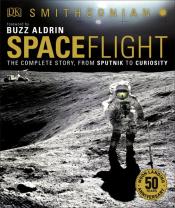
Spaceflight: The Complete Story, From Sputnik to Curiosity by Giles Sparrow
This compelling story of exploration charts and celebrates humankind in space, from Sputnik's launch in 1957 through the Apollo Moon landings and the International Space Station to future missions to Mars and beyond.
Spaceflight chronicles how, in the half-century that followed Sputnik, the world was revolutionized by space travel and exploration. The opening up of Earth's orbit to satellites led to a revolution in communications, monitoring of the environment, and materials science. For the human imagination, the impact has been even the voyages of robotic space probes have transformed our view of the Solar System, while Earth-orbiting satellites and missions to the Moon have forever changed our view of ourselves.This book is a celebration of human ingenuity and imagination. From the work of pioneers like Wernher von Braun, Yuri Gagarin, and Neil Armstrong to the triumphs and tragedies that followed, it reveals the people, science, and technology that have propelled us into the Space Age.
Image
Wally Funk’s Race for Space: The Extraordinary Story of a Female Aviation Pioneer by Sue Nelson
In 1961, Wally Funk was among the Mercury 13, the first group of American pilots to pass the Woman in Space programme. Wally sailed through a series of rigorous physical and mental tests, with one of her scores beating all the male Mercury 7 astronauts’, including John Glenn’s, the first American in orbit.
But just one week before the final phase of training, the programme was abruptly cancelled. A combination of politics and prejudice meant that none of the women ever flew into space. Undeterred, Wally went on to become America’s first female aviation safety inspector, though her dream of being an astronaut never dimmed.
In this offbeat odyssey, journalist and fellow space buff Sue Nelson joins Wally, now approaching her eightieth birthday, as she races to make her own giant leap, before it’s too late. Covering their travels across the United States and Europe – taking in NASA’s mission control in Houston, the European Space Agency’s HQ in Paris and Spaceport America in New Mexico, where Wally’s ride into space awaits – this is a uniquely intimate and entertaining portrait of a true aviation trailblazer.
Image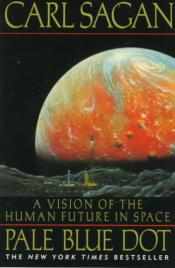
Pale Blue Dot: A Vision of the Human Future in Space by Carl Sagan
Pulitzer Prize-winning author Carl Sagan traces our exploration of space and suggests that our very survival may depend on the wise use of other worlds. This stirring book reveals how scientific discovery has altered our perception of who we are and where we stand, and challenges us to weigh what we will do with that knowledge. Photos, many in color.
After you’ve got the whole rocket science thing down, it’s time for the practical application. Well, practical may not be the word, but you won’t get anywhere if you don’t dream big, right? In these stellar sci-fi picks, you can go the speed of light, mingle with extraterrestrials, and try not to get caught in the event horizon.
- Science Fiction Picks
- Image
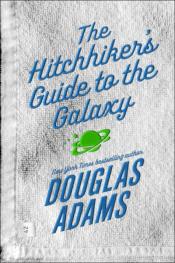
The Hitchhiker’s Guide to the Galaxy by Douglas Adams
Seconds before the Earth is demolished to make way for a galactic freeway, Arthur Dent is plucked off the planet by his friend Ford Prefect, a researcher for the revised edition of The Hitchhiker's Guide to the Galaxy who, for the last fifteen years, has been posing as an out-of-work actor.
Together this dynamic pair begin a journey through space aided by quotes from The Hitchhiker's Guide ("A towel is about the most massively useful thing an interstellar hitchhiker can have") and a galaxy-full of fellow travelers: Zaphod Beeblebrox--the two-headed, three-armed ex-hippie and totally out-to-lunch president of the galaxy; Trillian, Zaphod's girlfriend (formally Tricia McMillan), whom Arthur tried to pick up at a cocktail party once upon a time zone; Marvin, a paranoid, brilliant, and chronically depressed robot; Veet Voojagig, a former graduate student who is obsessed with the disappearance of all the ballpoint pens he bought over the years.
Where are these pens? Why are we born? Why do we die? Why do we spend so much time between wearing digital watches? For all the answers stick your thumb to the stars. And don't forget to bring a towel!
Image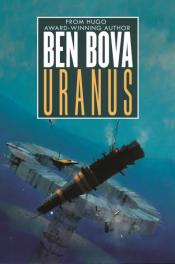
Ben Bova, author of Earth, continues his exploration of the future of a human-settled Solar System with the science fiction action adventure Uranus, the first of his Outer Planets trilogy.
On a privately financed orbital habitat above the planet Uranus, political idealism conflicts with pragmatic, and illegal, methods of financing. Add a scientist who has funding to launch a probe deep into Uranus's ocean depths to search for signs of life, and you have a three-way struggle for control.
Humans can't live on the gas giants, making instead a life in orbit. Kyle Umber, a religious idealist, has built Haven, a sanctuary above the distant planet Uranus. He invites "the tired, the sick, the poor" of Earth to his orbital retreat where men and women can find spiritual peace and refuge from the world.
The billionaire who financed Haven, however, has his own designs: beyond the reach of the laws of the inner planets Haven could become the center for an interplanetary web of narcotics, prostitution, even hunting human prey.
Meanwhile a scientist has gotten funding from the Inner Planets to drop remote probes into the "oceans" of Uranus, in search of life. He brings money and prestige, but he also brings journalists and government oversight to Haven. And they can't have that.
Image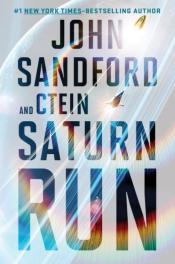
The year is 2066. A Caltech intern inadvertently notices an anomaly from a space telescope—something is approaching Saturn, and decelerating. Space objects don’t decelerate. Spaceships do.
A flurry of top-level government meetings produces the inescapable conclusion: Whatever built that ship is at least one hundred years ahead in hard and soft technology, and whoever can get their hands on it exclusively and bring it back will have an advantage so large, no other nation can compete. A conclusion the Chinese definitely agree with when they find out.
The race is on, and an remarkable adventure begins—an epic tale of courage, treachery, resourcefulness, secrets, surprises, and astonishing human and technological discovery, as the members of a hastily thrown-together crew find their strength and wits tested against adversaries both of this earth and beyond. What happens is nothing like you expect—and everything you could want from one of the world’s greatest masters of suspense.
Image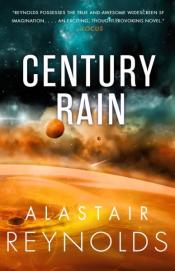
Century Rain by Alastair Reynolds
Three hundred years from now, Earth has been rendered uninhabitable due to the technological catastrophe known as the Nanocaust. Archaeologist Verity Auger specializes in the exploration of its surviving landscape. Now, her expertise is required for a far greater purpose.
Something astonishing has been discovered at the far end of a wormhole: mid-twentieth century Earth, preserved like a fly in amber. Somewhere on this alternate planet is a device capable of destroying both worlds at either end of the wormhole. And Verity must find the device, and the man who plans to activate it, before it is too late—for the past and the future of two worlds…
Image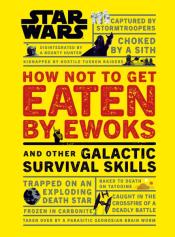
How Not to Get Eaten by Ewoks: and Other Galactic Survival Skills by Christian Blauvelt
The Star Wars galaxy is a dangerous place. Be prepared!
Would you survive in the spice mines of Kessel?
Could you escape from a giant space slug?
From tackling extreme weather and finding shelter, to avoiding social pitfalls, learn what to do to stay alive in a galaxy far, far away.
Interested in far out concepts but a little closer to home? Trade out those moon boots for a DeLorean, and join us for a travel through time. Initially popularized in mainstream media all the way back in 1895 with The Time Machine by H.G. Wells, time travel has become a staple in sci-fi, and we can see why. Journey to the future to discover the mystery of what’s to come, or return to the past to ensure that it never happens. Just make sure you watch out for those pesky paradoxes.
- Time Travel Picks
- Image
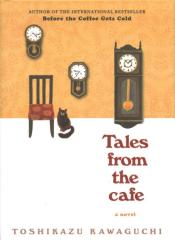
Tales from the Café by Toshikazu Kawaguchi
In a small back alley in Tokyo, there is a café which has been serving carefully brewed coffee for more than one hundred years. But this coffee shop offers its customers a unique experience: the chance to travel back in time...
From the author of Before the Coffee Gets Cold comes a story of four new customers each of whom is hoping to take advantage of Cafe Funiculi Funicula's time-travelling offer.
Among some faces that will be familiar to readers of Kawaguchi's previous novel, we will be introduced to:
The man who goes back to see his best friend who died 22 years ago
The son who was unable to attend his own mother’s funeral
The man who travelled to see the girl who he could not marry
The old detective who never gave his wife that gift...
This beautiful, simple tale tells the story of people who must face up to their past, in order to move on with their lives. Kawaguchi once again invites the reader to ask themselves: what would you change if you could travel back in time?
Image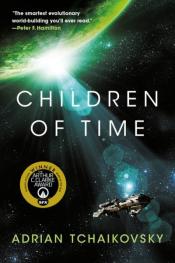
Children of Time by Adrian Tchaikovsky
A race for survival among the stars... Humanity's last survivors escaped earth's ruins to find a new home. But when they find it, can their desperation overcome its dangers?
WHO WILL INHERIT THIS NEW EARTH?
The last remnants of the human race left a dying Earth, desperate to find a new home among the stars. Following in the footsteps of their ancestors, they discover the greatest treasure of the past age—a world terraformed and prepared for human life.
But all is not right in this new Eden. In the long years since the planet was abandoned, the work of its architects has borne disastrous fruit. The planet is not waiting for them, pristine and unoccupied. New masters have turned it from a refuge into mankind's worst nightmare.
Now two civilizations are on a collision course, both testing the boundaries of what they will do to survive. As the fate of humanity hangs in the balance, who are the true heirs of this new Earth?
Image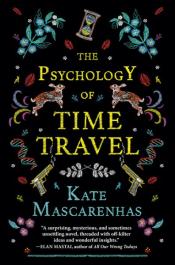
The Psychology of Time Travel by Kate Mascarenhas
In 1967, four female scientists worked together to build the world’s first time machine. But just as they are about to debut their creation, one of them suffers a breakdown, putting the whole project—and future of time travel—in jeopardy. To protect their invention, one member is exiled from the team—erasing her contributions from history.
Fifty years later, time travel is a big business. Twenty-something Ruby Rebello knows her beloved grandmother, Granny Bee, was one of the pioneers, though no one will tell her more. But when Bee receives a mysterious newspaper clipping from the future reporting the murder of an unidentified woman, Ruby becomes obsessed: could it be Bee? Who would want her dead? And most importantly of all: can her murder be stopped?
Traversing the decades and told from alternating perspectives, The Psychology of Time Travel introduces a fabulous new voice in fiction and a new must-read for fans of speculative fiction and women’s fiction alike.
Image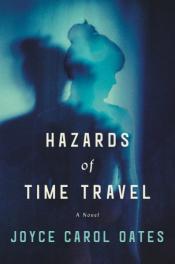
Hazards of Time Travel by Joyce Carol Oates
An ingenious, dystopian novel of one young woman’s resistance against the constraints of an oppressive society, from the inventive imagination of Joyce Carol Oates
“Time travel” — and its hazards—are made literal in this astonishing new novel in which a recklessly idealistic girl dares to test the perimeters of her tightly controlled (future) world and is punished by being sent back in time to a region of North America — “Wainscotia, Wisconsin”—that existed eighty years before. Cast adrift in time in this idyllic Midwestern town she is set upon a course of “rehabilitation”—but cannot resist falling in love with a fellow exile and questioning the constrains of the Wainscotia world with results that are both devastating and liberating.
Arresting and visionary, Hazards of Time Travel is both a novel of harrowing discovery and an exquisitely wrought love story that may be Joyce Carol Oates’s most unexpected novel so far.
Image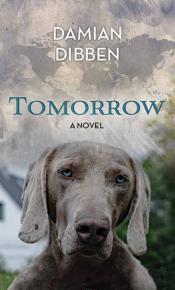
A wise old dog travels through the courts and battlefields of Europe and through the centuries in search of the master who granted him immortality
Tomorrow tells the story of a 217-year-old dog and his search for his lost master. His adventures take him through the London Frost Fair, the strange court of King Charles I, the wars of the Spanish succession, Versailles, the golden age of Amsterdam and to nineteenth-century Venice. As he journeys through Europe, he befriends both animals and humans, falls in love (only once), marvels at the human ability to make music, despairs at their capacity for war and gains insight into both the strength and frailties of the human spirit.
With the rich historical vision of Jonathan Strange & Mr Norrell and the captivating canine perspective of A Dog’s Purpose, Tomorrow draws us into a unique century-spanning tale of the unbreakable connection between dog and human.
Image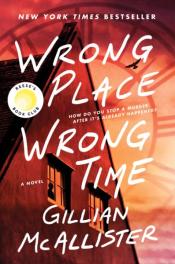
Wrong Place Wrong Time by Gillian McAllister
Can you stop a murder after it’s already happened?
It is midnight on the morning of Halloween, and Jen anxiously waits up for her 18-year-old son, Todd, to return home. But worries about his broken curfew transform into something much more dangerous when Todd finally emerges from the darkness. As Jen watches through the window, she sees her funny, seemingly happy teenage son stab a total stranger.
She doesn’t know who the victim is, or why Todd has committed such a devastating act of violence. All she knows is that her life, and Todd’s, have been shattered.
After her son is taken into custody, Jen falls asleep in despair. But when she wakes up… it is yesterday. The murder has not happened yet—and there may be a chance to stop it. Each morning, when Jen wakes, she is further back in the past, first weeks, then years, before the murder. And Jen realizes that somewhere in the past lies the trigger for Todd’s terrible crime…and it is her mission to find it, and prevent it from taking place.
December 8th marks the 17th annual observation of Pretend to be a Time Traveler Day, and, look at that, you’re just in time! Participants dress up and act the part of someone coming from a different era, be it past or future. It sounds simple, but here’s the catch: no one can find out that you’re a time traveler. Thankfully, we’ve gathered some nonfiction resources to help you blend in and find success no matter when you find yourself.
- Nonfiction Picks about Time Travel
- Image
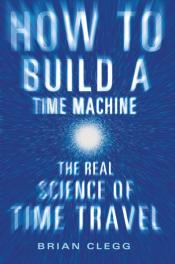
How to Build a Time Machine: The Real Science of Time Travel by Brian Clegg
A pop science look at time travel technology, from Einstein to Ronald Mallett to present day experiments. Forget time travel is real.In How to Build a Time Machine, Brian Clegg provides an understanding of what time is and how it can be manipulated. He explores the remarkable possibilities of real time travel that emerge from quantum entanglement, superluminal speeds, neutron star cylinders and wormholes in space. With the fascinating paradoxes of time travel echoing in our minds will we realize that travel into the future might never be possible? Or will we realize there is no limit on what can be achieved, and take on this ultimate challenge? Only time will tell.
Image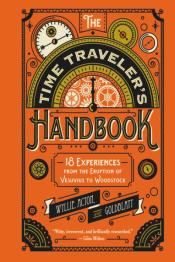
The Time Traveler’s Handbook: 18 Experiences from the Eruption of Vesuvius to Woodstock by David Goldblatt
Travel through time to witness some of the most extraordinary and colorful events in world history with this unusual and entertaining guide that includes fascinating cultural details from each period, including what and where to eat, what to wear, how to act like a local, and most importantly, how to stay alive.
Have you ever wished you could have experienced some of the most interesting and important events that have helped shape history? With The Time Traveler's Handbook you can! Johnny Acton, David Goldblatt, and James Wyllie transport you back in time, providing a “you-are-there” front-seat view of some the greatest moments in the human timeline.
Filled with engaging and colorful details, The Time Traveler's Handbook helps you make the most of your “travels,” giving you background information, insight into local customs, and advice on all aspects of period life to make your adventures authentic and help you actually live them. Forget museums and history books—The Time Traveler's Handbook gives you unprecedented access to a wide range of milestones, including Celebrations & Exhibitions; Moments That Made History; Cultural & Sporting Spectaculars; Epic Journeys and Voyages; and Extreme Events. Observe Mount Vesuvius erupt (and survive), see the assassination of the Archduke Ferdinand in Sarajevo, boogie with the Beatles in Hamburg, accompany Marco Polo to Xanadu, attend the opening night of Shakespeare’s Globe Theater, smell the cordite at the battle of Bull Run, and sit ringside at Foreman and Ali’s “Rumble in the Jungle” in Kinshasa.
Illustrated with color and black-and-white paintings and photographs of famous figures and locations, as well as detailed maps and illustrations to aid in your journey through time, The Time Traveler's Handbook is the ultimate guide to exploring history that unlocks the wonders of the past as never before.
Image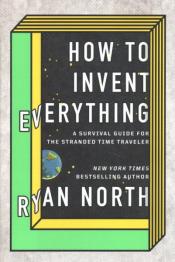
How to Invent Everything: A Survival Guide for the Stranded Time Traveler by Ryan North
What would you do if a time machine hurled you thousands of years into the past. . . and then broke? How would you survive? Could you improve on humanity's original timeline? And how hard would it be to domesticate a giant wombat?
With this book as your guide, you'll survive--and thrive--in any period in Earth's history. Bestselling author and time-travel enthusiast Ryan North shows you how to invent all the modern conveniences we take for granted--from first principles. This illustrated manual contains all the science, engineering, art, philosophy, facts, and figures required for even the most clueless time traveler to build a civilization from the ground up. Deeply researched, irreverent, and significantly more fun than being eaten by a saber-toothed tiger, How to Invent Everything will make you smarter, more competent, and completely prepared to become the most important and influential person ever.
Image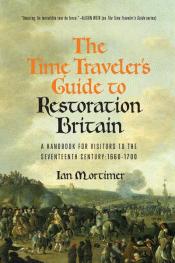
The Time Traveler’s Guide to Restoration Britain: A Handbook for Visitors to the Seventeenth Century: 1660-1699 by Ian Mortimer
Imagine you could see the smiles of the people mentioned in Samuel Pepys’s diary, hear the shouts of market traders, and touch their wares. How would you find your way around? Where would you stay? What would you wear? Where might you be suspected of witchcraft? Where would you be welcome?
This is an up-close-and-personal look at Britain between the Restoration of King Charles II in 1660 and the end of the century. The last witch is sentenced to death just two years before Isaac Newton’s Principia Mathematica, the bedrock of modern science, is published. Religion still has a severe grip on society and yet some―including the king―flout every moral convention they can find. There are great fires in London and Edinburgh; the plague disappears; a global trading empire develops.
Over these four dynamic decades, the last vestiges of medievalism are swept away and replaced by a tremendous cultural flowering. Why are half the people you meet under the age of twenty-one? What is considered rude? And why is dueling so popular? Mortimer delves into the nuances of daily life to paint a vibrant and detailed picture of society at the dawn of the modern world as only he can. 16 pages of color illustrations
If questionable science isn’t for you, don’t worry, we’ve got you covered. After all, there’s no shortage of sights and adventures on our own humble planet. Through seven continents, five oceans, and dozens of high-resolution photos you can view from the comfort of your living room, these travel guides will surely ignite your wanderlust.
- Travel Guides for traversing Earth
- Image
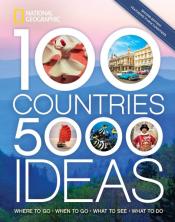
100 Countries, 5,000 Ideas: Where to Go, When to Go, What to See, What to Do by the National Geographic Society
In this fully revised and updated edition of the best-selling 100 Countries, 5,000 Ideas, find where to go, what to do, when to visit, and more for the top destinations around the world. Filled with new content, 11 new countries, and brand-new photography from National Geographic, you’ll find everything you need to plan your next globetrotting adventure. Travel to Vietnam where you can paddle Ha Long Bay and temple hop on a tuk tuk city tour. In France, visit well-known Parisian spots, then make your way to the off-the-beaten Dinan (France’s only walled city) and the Loire Valley. In South Africa, find yourself in an urban oasis in Cape Town before heading on a safari adventure. Go to the ends of the Earth in Chile before hopping a boat to cruise a glacier-filled bay. And history buffs will be fascinated by a three-country WWII tour. Whatever your pleasure, this rich guidebook has the trip--and country--for you. Complete with essential tips like when to go and what to bring, you’ll be packing your bags and crossing off bucket list destinations in no time.
Image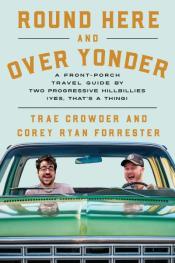
Round Here and Over Yonder: A Front-Porch Travel Guide by Two Progressive Hillbillies by Trae Crowder and Corey Ryan Forrester
Join Southern comedian duo Trae Crowder and Corey Ryan Forrester in this hilarious and irreverent travel guide as they wander about ponderin' the peculiarities beyond their small-town front porches. Trae and Corey will take you from the smallest of small towns to major US metropolises (or is it metropoli? We haven't a fartin' clue!). They'll even cross the pond to sip tea in some of them fancy kings-and-castles places that PBS Viewers Like You can't stop yapping about. From Chickamauga to Cheyenne, New York to New Orleans, Seattle to Scotland—no matter where these two wandering jesters go, there's something to roast, something to toast, and something to learn about what ties us together as humans. Even the most outrageous of us. In this book you'll Perfect for anyone
Image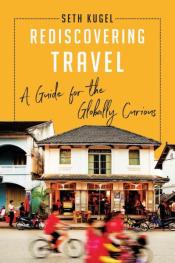
Rediscovering Travel: A Guide for the Globally Curious by Seth Kugel
Having captivated millions during his five-year tenure as the New York Times’s “Frugal Traveler,” Seth Kugel has become one of our most internationally beloved travel writers. While his famously unassuming journeys around the globe have forged a signature philosophy of whimsy and practicality, they have also revealed the seemingly infinite booby traps of vacationing on the grid. In a book with widespread cultural reverberations, Kugel takes the modern travel industry to task, determined to reignite humanity’s age-old sense of adventure that has virtually been vanquished by the spontaneity-obliterating likes of Google Maps, TripAdvisor, and Starwood points. Woven throughout with vivid tales of his perfectly imperfect adventures, The Intrepid Traveler explains—often hilariously—how to make the most of new digital technologies without being shackled to them. For the tight-belted tourist and the first-class flyer, the eager student and the comfort-seeking retiree, Kugel shows how we too can rediscover the joy of discovery.
Image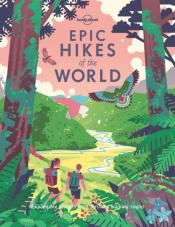
Epic Hikes of the World: Explore the Planet’s Most Thrilling Treks and Trails by Lonely Planet
With stories of 50 incredible hiking routes in 30 countries, from New Zealand to Peru, plus a further 150 suggestions, Lonely Planet's Epic Hikes of the World will inspire a lifetime of adventure on foot. From one-day jaunts and urban trails to month-long thru-hikes, cultural rambles and mountain expeditions, each journey shares one defining feature: being truly epic.
Epic Hikes is organised by continent, with each route brought to life by a first-person account, beautiful photographs and charming illustrated maps. Additionally, each hike includes trip planning advice on how to get there, where to stay, what to pack and where to eat, as well as recommendations for three similar hikes in other regions of the world.
Image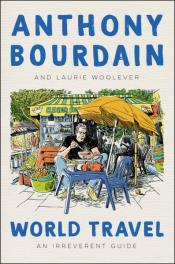
World Travel: An Irreverent Guide by Anthony Bourdain
A guide to some of the world’s most fascinating places, as seen and experienced by writer, television host, and relentlessly curious traveler Anthony Bourdain.
Anthony Bourdain saw more of the world than nearly anyone. His travels took him from the hidden pockets of his hometown of New York to a tribal longhouse in Borneo, from cosmopolitan Buenos Aires, Paris, and Shanghai to Tanzania’s utter beauty and the stunning desert solitude of Oman’s Empty Quarter—and many places beyond.
In World Travel, a life of experience is collected into an entertaining, practical, fun and frank travel guide that gives readers an introduction to some of his favorite places—in his own words. Featuring essential advice on how to get there, what to eat, where to stay and, in some cases, what to avoid, World Travel provides essential context that will help readers further appreciate the reasons why Bourdain found a place enchanting and memorable.
Supplementing Bourdain’s words are a handful of essays by friends, colleagues, and family that tell even deeper stories about a place, including sardonic accounts of traveling with Bourdain by his brother, Chris; a guide to Chicago’s best cheap eats by legendary music producer Steve Albini, and more. Additionally, each chapter includes illustrations by Wesley Allsbrook.
For veteran travelers, armchair enthusiasts, and those in between, World Travel offers a chance to experience the world like Anthony Bourdain.